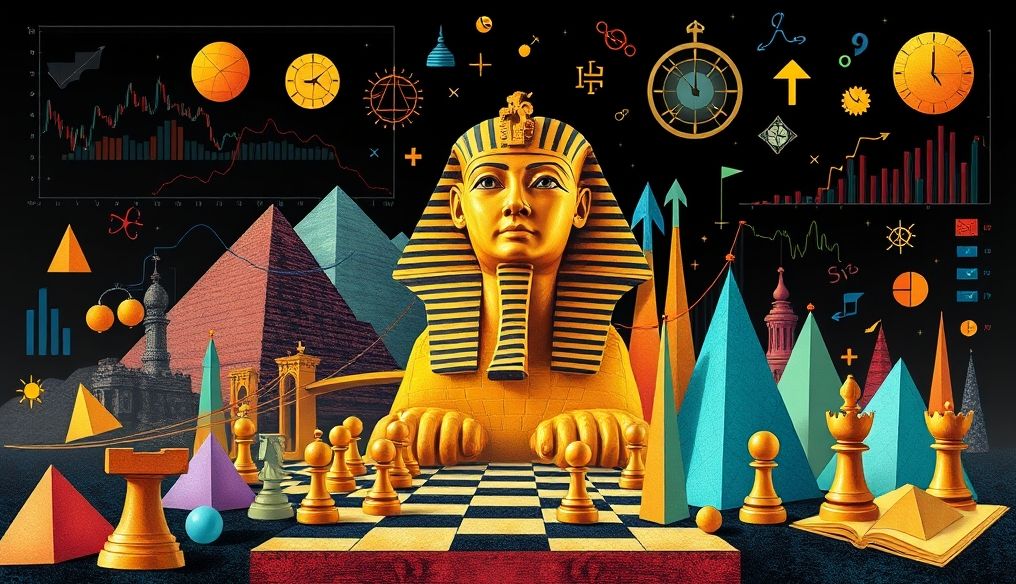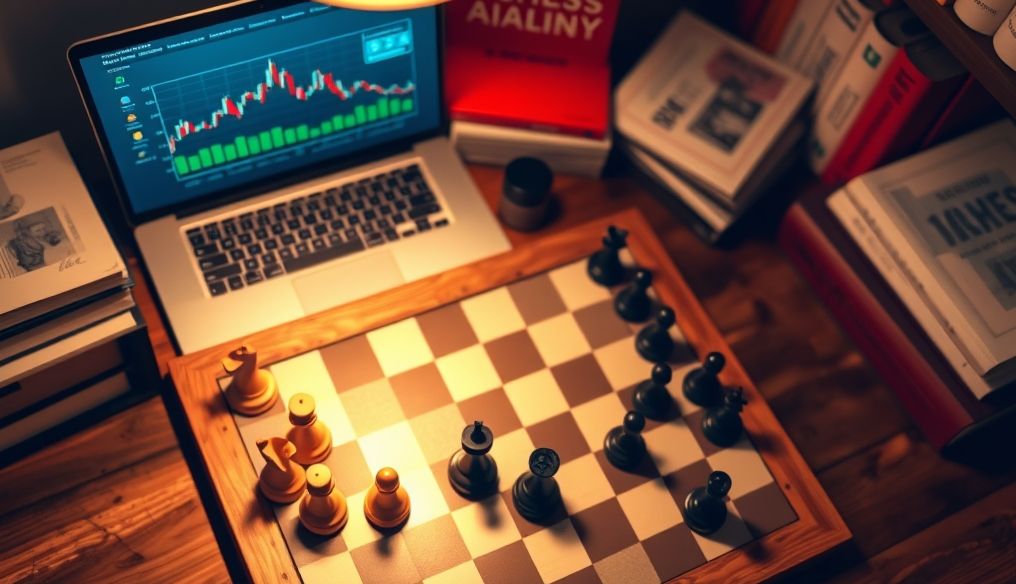Introduction: The Magic of Logic Puzzles
Logic puzzles are mental challenges that require the use of logic and reasoning to arrive at a solution. They are not just a way to pass the time, but powerful tools for developing critical thinking and problem-solving skills. Throughout history, puzzles have emerged that have baffled minds and sparked discussions, and they continue to inspire us today.
Chapter 1: The Riddle of the Sphinx
Origin of the Riddle and its Historical Significance
The Riddle of the Sphinx is one of the oldest and most famous riddles in history. Legend has it that the Sphinx would pose a riddle to anyone who passed by, and those who failed to solve it would meet their demise. The famous riddle is: "What walks on four legs in the morning, two in the afternoon, and three in the evening?"
Solution and Interpretation
The answer is a human. In the morning (childhood) they crawl on four legs, in the afternoon (youth) they walk on two, and in the evening (old age) they lean on a cane.
Chapter 2: The Knights and Knaves Island Puzzle
Formulation of the Puzzle
The Knights and Knaves Island puzzle is a classic logic puzzle. Imagine you are on an island inhabited by two types of people: Knights who always tell the truth, and Knaves who always lie. You meet a person and ask them: "Are you a Knight?" How can you determine whether they are a Knight or a Knave based on their answer?
Solution Strategies
- Indirect Question: Ask a question whose answer does not change regardless of whether the person is a Knight or a Knave. For example: "Is the sky blue?" If they answer "Yes," they are a Knight. If they answer "No," they are a Knave.
- Double Question: Ask a question that includes another question. For example: "If I asked you if you were a Knight, would you answer yes?" The Knight would say "Yes" (because they would tell the truth), and the Knave would also say "Yes" (because they would lie about their answer).
Chapter 3: The Prisoner's Dilemma
Explanation of the Dilemma
The Prisoner's Dilemma is a classic example in game theory. Two prisoners are accused of a crime and are interrogated separately. If both confess, each will be sentenced to 5 years in prison. If neither confesses, each will be sentenced to 1 year in prison. If one confesses and the other denies, the confessor will be released and the other will be sentenced to 10 years in prison.
Strategic Analysis
Logically, the best strategy for each prisoner is to confess, regardless of what the other prisoner does. This leads to a worse outcome for both prisoners (5 years each) compared to if neither had confessed (1 year each).
Chapter 4: The Hat Color Puzzle
Description of the Puzzle
Three people are standing in a line, such that the person in the back sees the two people in front of them, the person in the middle sees the person in front of them, and the person in the front sees no one. A hat is placed on each person's head, either red or blue. They are informed that there are at least two hats of the same color. One of the people must deduce the color of their own hat.
Logical Solution
If the person in the back saw two different colored hats, they would know that their hat must be the same color as one of the two hats they see. If the person in the back cannot deduce, it means that the person in the middle sees either two hats of the same color or a red hat and a blue hat. If the person in the middle sees a red hat in front of them, they would know that their hat must be blue (because the person in the back would have deduced their hat color if they saw two different hats). If the person in the middle cannot deduce, it means the person in the front is wearing a red hat, thus the person in the front knows the color of their hat.
Chapter 5: The Seven Bridges of Königsberg Puzzle
History of the Puzzle
The city of Königsberg (now Kaliningrad) was divided into four regions by a river, and these regions were connected by seven bridges. The question is: Can a tour of the city be made that crosses each bridge only once?
Euler's Solution
Leonhard Euler proved that this is impossible. He concluded that the number of bridges leading to each region must be even, or that there can only be two regions with an odd number of bridges. In Königsberg, all four regions were connected by an odd number of bridges.
Chapter 6: Russell's Paradox
Formulation of the Paradox
Russell's paradox, formulated by Bertrand Russell, concerns the set of all sets that do not contain themselves as an element. Does this set contain itself? If it contains itself, then it does not belong to the set. And if it does not contain itself, then it belongs to the set. This paradox shook the foundations of set theory.
Significance of the Paradox
Russell's paradox forced mathematicians to rethink the foundations of set theory and develop more precise axiomatic systems to avoid such paradoxes.
Chapter 7: The Monty Hall Problem
Explanation of the Puzzle
In a TV show, a contestant is presented with three doors. Behind one of the doors is a prize, and behind the other two doors are goats. The contestant chooses a door. Then the host (who knows where the prize is) opens one of the other two doors to reveal a goat. Then the host asks the contestant: "Do you want to switch your choice to the other remaining door?" Should the contestant switch their choice?
The Correct Conclusion
Yes, the contestant should switch their choice. Initially, the chance of choosing the correct door was 1/3. After the host revealed a goat behind one of the other doors, the chance of the prize being behind the other remaining door increased to 2/3.
Chapter 8: The Birthday Paradox
Formulation of the Puzzle
At a birthday party, there are 23 people. What is the probability that at least two people share the same birthday?
Probabilistic Solution
The answer is surprising: the probability is greater than 50%. This seems counterintuitive because there are 365 days in a year. But when calculating the probabilities, we find that the probability exceeds 50% when there are 23 people.
Conclusion: The Power of Logical Thinking
Logic puzzles are not just entertainment, but powerful tools for developing critical thinking and problem-solving skills. By understanding these puzzles and trying to solve them, we can improve our mental abilities and enhance our ability to make informed decisions in our daily lives.




